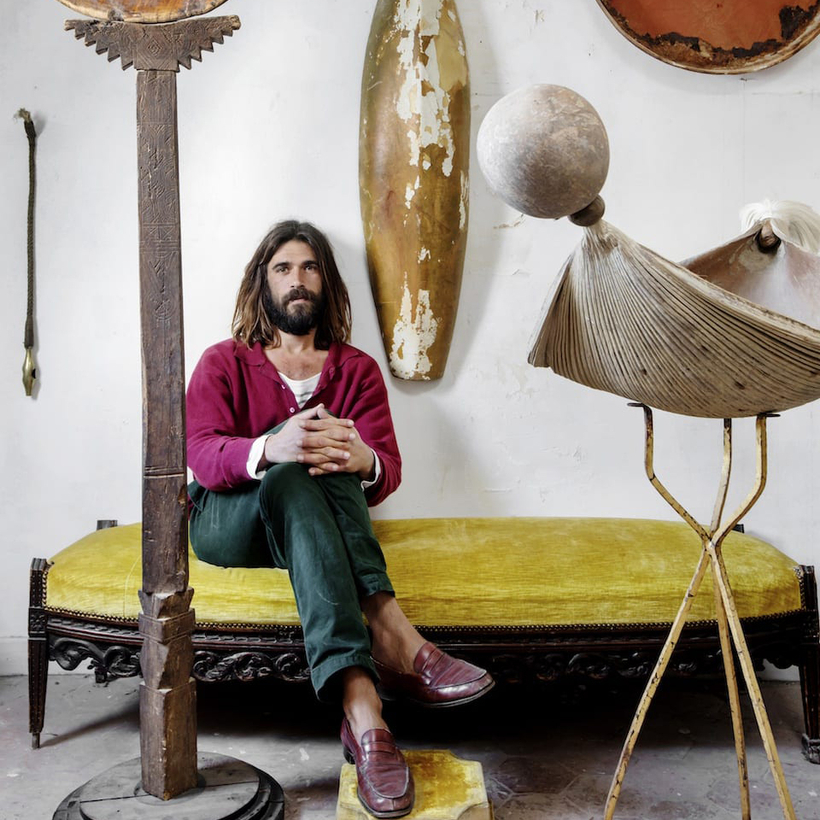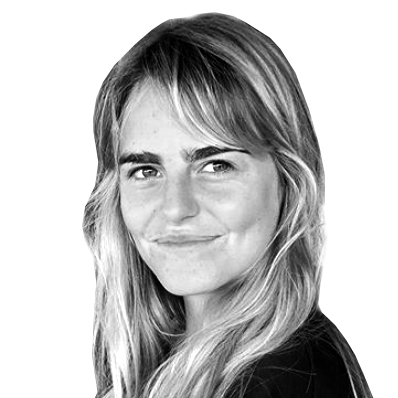It’s midmorning in Paris, and the French artist Nicolas Lefebvre has just landed from the shores of Jericoacoara, Brazil. He lives in the Fourth Arrondissement with his 12-year-old daughter, Anahi, in a Haussmannian-style apartment that’s filled to the brim with his sculptural assemblages, including works in marble and wood plus knickknacks of all shapes and sizes.
“I look for objects on my travels,” he tells me in a recent interview. He likes to “mix things from different cultures and different periods.”
Lefebvre, 39, studies primitive artwork from across the globe, his work often paying tribute to a single symbol, the mother goddess—a figure of kindness, protection—to fill a void in his life.
Collector’s Edition
Lefebvre was born in Boulogne-Billancourt, in the western suburbs of Paris, and had a culture-filled upbringing. In the city of the Pompidou and the Orsay, there was easy access to the Surrealist worlds of Breton and Miró. At home, he pored over the bronze sculptures his father, an advertising executive, created but never exhibited.

“Ever since I was 15 years old I’ve collected things,” he says. “My grandfather was a collector. He introduced me to this world of finding paintings, objects, furniture.” When Lefebvre was a teenager, his family traveled to different continents, where bustling markets and local artisanry captured his imagination.
At 18, Lefebvre enrolled in an art-history course at the Ecole du Louvre, intending to become an art dealer or gallerist. But his mother’s unexpected death, when he was only 25, changed everything. “I just had this inner feeling,” he says. “I suddenly needed to create.”
The shell on the empty beach he’d picked up, the bone from Alaska, all began to come together in the works he’s becoming known for today. His assemblages often resemble tribal creations, but also have a likeness to Dadaist sculpture.
He lets himself be guided by “intuition,” he says. “The objects speak to me, and they find each other.” He collects objects for his own art on his travels, while also choosing furniture for clients such as Jacques Lacoste.
Though Lefebvre’s work is unusual in the contemporary-art scene, it’s caught on. His first show, at a furniture gallery in Paris in 2006, sold out quickly. Since then, a growing number of intellectuals, art experts, and, more recently, galleries have been taking an interest in his work.

Today, you might recognize Lefebvre as Monica Bellucci’s other half. (The pair are rumored to have been dating since 2017.) But the artist is cagey when it comes to Bellucci, and quickly changes the subject to his most recent exhibition.
Opening this weekend, his show at Tristan Hoare, in London, combines works from lockdown with newer creations. The theme is “Objets Montés,” or “Mounted Objects,” inspired by a practice that dates back to the Middle Ages: precious materials combined to create new meaning.
When I ask Lefebvre about his schedule, he chuckles. “When you are an artist, you create all the time. Because when you go to sleep, when you’re on holidays, Sunday, weekend, it’s the same—you are always dreaming.”
“Objets Montés” is on at Tristan Hoare, in London, through April 22
Elena Clavarino is an Associate Editor for AIR MAIL

